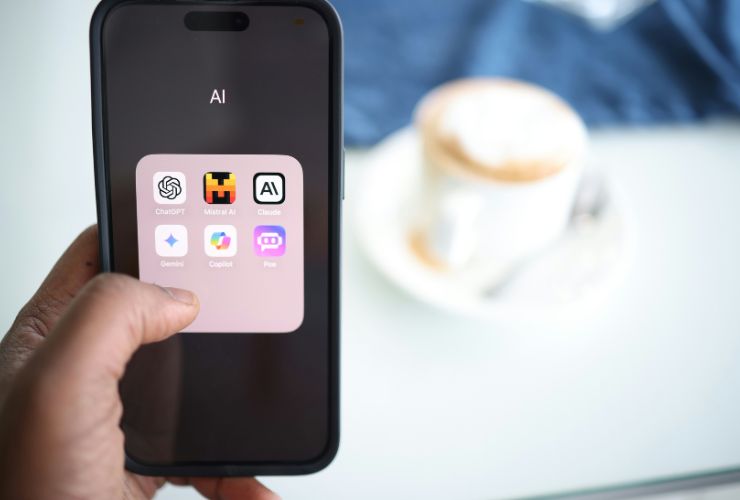Table of Contents
In today’s fast-paced digital landscape, content has become the fuel that powers brands, businesses, and individuals online. But traditional content creation often demands significant time, effort, and resources. This is where generative AI content steps in as a true game-changer. From drafting blog posts and creating visuals to developing marketing copy, podcasts, and even videos, generative AI is reshaping how creators and businesses produce and scale their storytelling.
As someone who has worked closely with creative professionals, marketers, and brands navigating this AI-driven shift, I can say with confidence: we are at the cusp of a creative revolution. In this blog, let’s dive deep into how generative AI transforms content creation, its opportunities and challenges, and why adopting it strategically can unlock unprecedented growth.
What Is Generative AI Content?
Generative AI content refers to any material – text, images, videos, music, or even design assets – that is created or co-created using AI models trained on large datasets. Unlike traditional automation tools, generative AI doesn’t just replicate fixed templates. Instead, it “learns patterns” from massive amounts of information and produces fresh, human-like results.

For example:
- A blog post draft was generated in seconds using a large language model.
- Social media visuals produced by AI-driven image generators.
- Product descriptions customized for different customer segments.
- Audio or video scripts that align with a brand’s tone of voice.
The result is scalable, high-quality output that saves time while also sparking new creative directions.
Why Generative AI Is a Game-Changer for Creators
The rise of generative AI content unlocks benefits that go beyond productivity. It’s enabling creators to experiment, push boundaries, and stay relevant in a saturated digital ecosystem. Some of the biggest advantages include:
1. Speed and Scalability
Content that used to take weeks of planning, writing, and editing can now be generated in minutes. Whether you’re a solo entrepreneur or a large brand, speed means faster go-to-market strategies and more touchpoints with your audience.
2. Enhanced Creativity
Ironically, AI is not replacing creativity—it’s amplifying it. By providing multiple content ideas, drafts, and design variations, AI serves as a brainstorming partner. Creators can focus on higher-value tasks like strategy, storytelling, and adding personal experiences.
3. Personalization at Scale
Today’s audiences expect tailored experiences. Generative AI can customize blogs, emails, or ad copies for different customer personas without manually rewriting them. Imagine sending 10,000 personalized email campaigns generated in hours instead of weeks.
4. Accessibility for Small Businesses
You don’t need an entire marketing department to compete with big players anymore. Small businesses can tap into AI tools for blogs, SEO content, product mockups, and even ads that look and sound professional.
5. Democratization of Content Creation
Generative AI lowers entry barriers. Even someone with no design or writing background can now launch a branded YouTube channel or e-commerce website supported by compelling AI-generated visuals and copy.
Real-World Applications of Generative AI Content
The practical use cases of generative AI are expanding daily. Let’s look at where it’s making the biggest impact:
- Marketing & Advertising
- Automated ad copy and campaign variations tailored to target demographics.
- Realistic AI-generated product photography for catalogs.
- Publishing & Blogging
- Drafting blog posts, outlines, and headlines.
- Enabling SEO-friendly keyword integration for higher discoverability.
- Social Media Management
- Creating visually stunning Instagram posts and captions.
- Generating short-form video scripts for TikTok or YouTube Shorts.
- E-Commerce
- AI-generated product descriptions across thousands of SKUs.
- Personalized shopping experiences through AI recommendations.
- Entertainment and Creative Arts
- AI-written music scores or scripts.
- Virtual storyboarding for films and animations.
Challenges and Ethical Considerations
While the potential of generative AI content is massive, so are the debates around its responsible use. Businesses and creators must remain mindful of:
- Originality vs. Plagiarism: AI outputs are based on existing datasets, raising questions about ownership and copyright.
- Bias and Fairness: Models reflect the biases of their training data, which can lead to inaccurate or culturally insensitive content.
- Transparency: Audiences value authenticity. Brands should disclose where and how AI is involved in content creation.
- Over-reliance: Using AI without human refinement risks losing originality, emotional depth, and brand identity.
This is where human oversight becomes critical. AI should serve as a co-pilot, not the driver of your entire content strategy.
The Future of Generative AI and Content Creation
The next few years will redefine digital creativity. Here’s what we can expect:
- Multimodal Creativity: Tools that seamlessly generate text, visuals, and audio together for holistic campaigns.
- Hyper-Personalized Marketing: Real-time AI-generated ads tailored to individual consumer moods and behavior.
- Collaboration Between Humans and AI: Instead of competing, AI will serve as a powerful assistant that takes care of heavy lifting while humans focus on creativity and strategy.
- Stricter Regulations and Ethical Guidelines: To maintain trust, governments and organizations will establish new standards around disclosure, copyright, and accuracy.
For creators, the key lies in experimenting with AI without losing their authentic voice. The magic formula is AI-driven productivity + human-driven storytelling.
Final Thoughts
Generative AI content is not about replacing human creativity but supercharging it. The technology is evolving at an unprecedented pace, opening limitless opportunities for creators, brands, and businesses to scale content with speed and personalization.
That said, the future will belong to those who blend AI’s efficiency with human authenticity. Be the creator who leverages AI as a smart partner while continuing to provide value, credibility, and unique perspectives.
If used wisely, generative AI content will not just transform content creation—it will transform how we connect, communicate, and create meaning in the digital age.